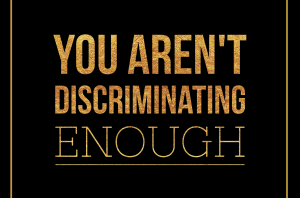
Since it was acquired by Facebook in 2012, Instagram has grown to more than five times the size of Snapchat. Now, it’s coming after YouTube.
At a food-and-influencer-filled event in San Francisco on Wednesday, the company announced a new app for long-form video called IGTV, which will also exist as a tab within Instagram’s existing app. Underscoring just how many people are obsessively spending time on Instagram these days, co-founder Kevin Systrom also revealed that the app now has more than 1 billion monthly active users.
Instagram’s push into longer videos was widely expected, and had been reported before by TechCrunch. And the company scooped itself Wednesday when it pushed out the IGTV announcement before the event, which was delayed by an hour, had even kicked off.
On IGTV, long-form vertical videos can go as long as ten minutes (previously, Instagram videos were limited to one minute). Instagram is making some exceptions for creators with massive audiences: They can post up to 60 minutes of video. IGTV videos will all be prerecorded, not live, although Instagram product manager Ashley Yuki indicated that live video is something the company will be looking at in the future.
Unlike the main Instagram app, which shows video “Stories” as bubbles at the top of the page and displays uploaded videos as part of the regular feed, IGTV videos will appear as a series of rectangular thumbnails at the bottom of a creator’s page. Once you tap on one, the video goes full screen. On the lower left-hand corner of each video are the same three icons you see now on Instagram: a heart, a comment bubble, and a share tool. Tap on those for the same functionality as on the main Instagram app.
Instagram’s approach to IGTV mimics what it did with Boomerang, its standalone app for creating one-second video loops, which also exists within Instagram. For now, IGTV will exist both as its own app and as a feature within the main Instagram app. The decision is also reflective of an overall Facebook strategy; the social network split off its Messenger service from its core app in 2014.
But that two-app strategy could change if long-form video takes off, particularly with teens. Throughout the event, Instagram made clear what was driving its decision to support long-form video: It’s trying to appeal to a younger generation of consumers who are increasingly consuming video on mobile devices. Systrom and Yuki both cited data that show teenagers are watching 40 percent less TV than they did just five years ago.
“The tools we watch video on are old and out of date,” Systrom said onstage at the event. “Think about it—we still watch videos formatted for TV, on a vertical screen.”
Systrom’s death knell for any video that isn’t vertical may be premature. But there’s no doubt smartphones and vertical video have captured a massive segment of the video-watching population. Even subscription services like Netflix now offer vertical video for mobile devices.
From both a consumption and a content-creation perspective, IGTV is going directly up against YouTube, which just announced it has more than 1.9 billion monthly logged-in users, and is already well established as a place for creators to distribute long form video. Instagram hopes the platform will be used by already-popular creators, like former Vine star Lele Pons, who has more than 25 million Instagram followers and who also appeared on stage at Wednesday’s event. The app is launching with a group of pre-selected video stars, including publishers like National Geographic, which has more than 88 million followers on Instagram, and brands like Benefit cosmetics. But it will be open to anyone who uses Instagram over the coming weeks.
On Wednesday, IGTV was being sold as a place to watch entertainment, rather than share life updates with a group of close friends. And, while there won’t be ads on IGTV to start – they’re coming.
“Right now we’re focused on building engagement, and there are no ads in IGTV in day one,” Systrom said to a group of reporters after the event. “But that is a very reasonable place to end up. There will obviously be a way for creators to make a living since they spend their lives doing this.” Ads already run on some creators’ videos on Facebook, and yesterday, the company announced a host of new tools designed to help them make money.
Ads aside, there are still some key differences between IGTV and YouTube as products, the biggest being their approaches to formatting. Due in part to its horizontal formatting, YouTube has successfully become the premiere online destination not for only digital-first creators but also for mainstream music and television content. Its horizontal videos make natural sense for say, music videos, or late-night talk show clips.
YouTube can also provide a personal viewing experience as well as a social one, in that you can watch it on your phone but also cast videos onto a television, or play them on a computer for a group of huddled friends. The same could be said for Twitch, Amazon’s hugely popular live-streaming service for gamers. It’s hard to gather around a phone to watch a vertical video and even more awkward to cast one onto a TV.
Even if Instagram is onto something with long-form vertical video, IGTV will likely face many of the same challenges that YouTube has in the past. While Systrom has indicated he wants creators to make a living off of this, that’s often easier said than done, and the company will still have to figure out how to compensate creators when ads arrive. (Instagram influencers primarily earn an income by partnering with brands.)
Also, crafting and editing a long form video is arguably more labor-intensive than snapping a photo, and creators may want to be compensated directly by Instagram for that work. Over the past year, YouTube has struggled to balance creators’ concerns over diminished advertising income with brands’ unease about their ads running alongside controversial content.
Instagram will also need to carefully decide how it plans to moderate IGTV. So far, the social network has sidestepped many of the concerns over fake news and objectionable content that have plagued its parent company since the 2016 presidential election. (Though Russian propaganda was found to have spread on Instagram as well.)
As YouTube has found, it’s incredibly difficult to effectively moderate longform video. A moderator typically only has several seconds to look at a photo before deciding whether it violates a site’s community guidelines; it’s often impossible to make the same sort snap judgement about a video that’s up to an hour long.
When asked about moderation, Systrom replied that his company is already tasked with handling the user-generated content of over 1 billion people and that it won’t be a huge lift to additionally monitor longform video. He also said that Instagram is hiring more moderators, though he declined to say exactly how many.
If IGTV does become as popular as Instagram bets it will be, then the company may very well have to consider what happens when people use the app not just for cooking tutorials and cats, but for much more controversial content. And if it has any question about how that works, it could look to YouTube. Or, even its own parent company, Facebook.
By wired






